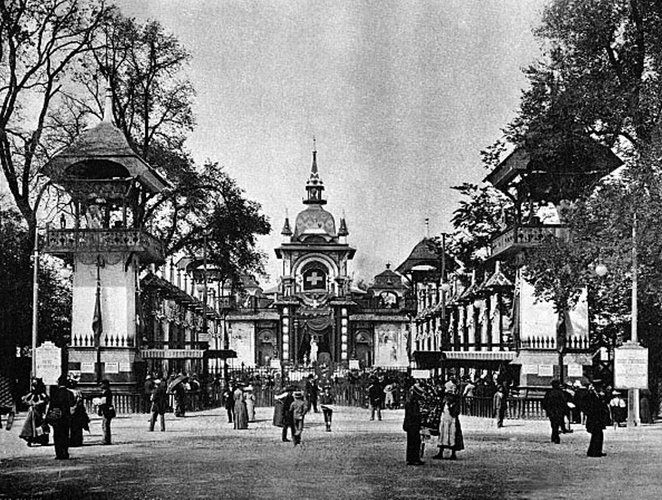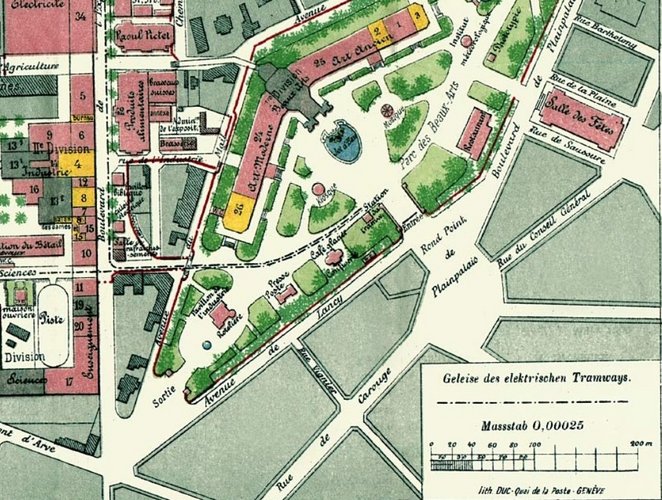The second National Exhibition in Geneva in 1896 sold 2.3 million admissions. Nevertheless, it ended with a deficit of CHF 740'000.00. This was due not only to the long journey for many visitors, but also to the bad weather that prevailed in the summer of 1896.
For the first time, a national exhibition was supplemented by an amusement park to attract additional visitors. This invention was not new: at the 1893 World's Fair in Vienna, the Prater and an artificial village with a rural idyll gave the locals consolation for their ill-fated World's Fair, while cholera broke out and the stock exchange crashed.
In Geneva, the Parc de Plaisance and the Village Suisse beckoned with an artificial mountain, 56 houses and 3'523 inhabitants dressed in the country's most diverse costumes. Unintentionally, the village became the focal point of the current problems in the country. Already during the construction of this 115.00-metre-long and 18.00-metre-high plaster illusion of the Bernese Oberland, complete with grazing cows, there were strikes. Switzerland had four faces: those of the landless population and the proletariat and those of the rich, urban class and the big landowners. The Geneva workers' associations accused the organisers that the Expo would exacerbate the contrasts.
In Geneva, the Department of Home Affairs presented the statistics that were still missing in Zurich. Alexander von Humboldt's land surveys in Switzerland and the cartographic works of General Henri Dufour aroused great interest.
Black people froze for a summer
With the holding of the National Exhibition, the city on the Rhone for the first time consciously turned its attention to the rest of Switzerland. Patriotic feelings took hold of the Romands. Interest in Swiss-German authors grew and the idyllic châlet style prevailed in building everywhere on Lake Geneva.
The National Exhibition came at the right time: Switzerland was in the middle of a tariff war and politicians took the opportunity to urge the population to buy Swiss products.
Apart from the Village Suisse, the Village Noire was undoubtedly the highlight of the National Exhibition. A Geneva businessman imported 230 Sudanese who lived in mud huts for a summer. This idea had also been realised before at previous world exhibitions.
Photos: © Virtuelles Museum www.expoarchiv.ch








